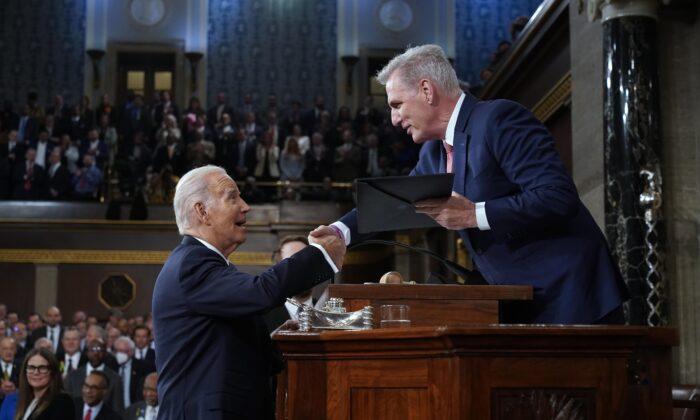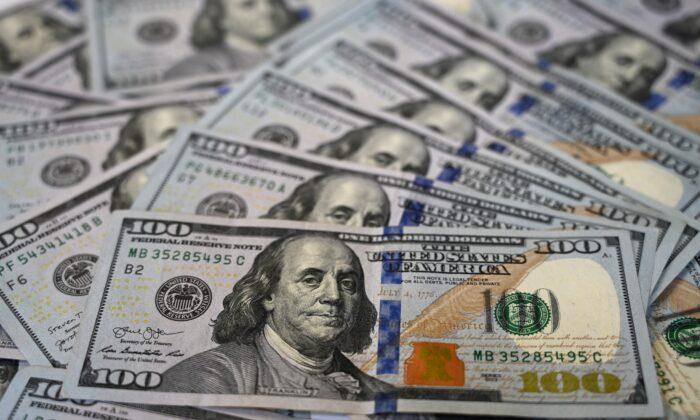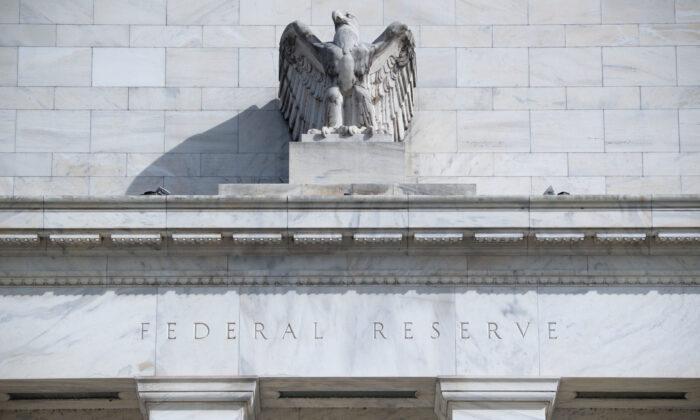The Debt Deal
McCarthy did achieve several concessions from the president. The most significant was a $50 billion reduction in nondefense discretionary spending for fiscal 2024. The president also agreed not to spend $30 billion in as yet unspent COVID funds. Hence, it appears the main impact of the deal will be to reduce federal spending by a total of about $80 billion from what would have been spent in fiscal 2024.Viewed from the perspective of the surge in federal spending beginning in 2020, the impact of the debt deal on spending is modest. Federal spending was $4.5 trillion in 2019. The surge in spending in 2020 brought it to $6.6 trillion. A combination of this increase and a decline in the economy brought federal spending from 21 percent to 31 percent of gross national product (GDP).
Despite a recovery in 2021, federal spending increased to $6.8 trillion due to a combination of COVID spending and the initial stages of the president’s “Build Back Better” legislation. Although GDP rose by a sharp 7.50 percent in 2021, the surge in spending kept the federal share at a too-high 30 percent of the economy.
The Congressional Budget Office report on May 12, 2023, estimates federal spending in fiscal 2023 at $6.4 trillion, or 24 percent of GDP. By cutting $80 billion from current legislation, the debt deal reduces the estimated federal share of spending in 2024 from 23.5 percent to 23.2 percent.
(Source: U.S. Department of the Treasury)
Many Republicans will be disappointed with this small change in direction. However, elections have consequences. With the Democrats in charge of two-thirds of the government, there are limitations to what the remaining third can accomplish. From this perspective, the House Republicans were at least able to trim a bit of the excess federal spending from recent years.
In addition, McCarthy was able to increase the leverage the House has over appropriations. The debt-ceiling agreement provides for a 1 percent cut in all discretionary appropriations if Congress fails to pass all appropriation bills by the end of this year. This 1 percent cut in discretionary spending would cut another $18 billion from the 2024 budget.
The Negative Impact of Excessive in Federal Spending
My book, Rich Nation, Poor Nation: Why Some Nations Prosper and Others Fail, documents major cycles of prosperity and failure. One characteristic of U.S. policy failures has been cycles when federal spending grows faster than private spending. Since 1900, there have been four such cycles. During each of these cycles, living standards were flat or down. Beginning in 2020, the United States has entered the fifth cycle of excessive federal spending.When government increases its share of the economy, it automatically reduces the share of spending to the private, productive sector. The result has been a deterioration in the nation’s productivity, which is down 1 percent this past year. Without an increase in productivity, living standards will continue to decline.
To reverse the economy’s current malaise and redirect policies and to increase living standards, the United States must engage in a major effort to reduce federal spending as a share of the economy. Modest 1 percent growth in discretionary spending won’t be enough. Past failures to control federal spending have increased the nation’s debt to the extent that we will spend more for interest on the debt than on national defense.
The wrongheaded belief that federal spending provides an inexhaustible solution to economic problems should come to an end. As interest on the debt becomes an increasingly large component of mandatory spending, it will crowd out one after another government programs. Attempting to pay for these programs by increasing taxes is not a viable option. Tax increases directly reduce funds to the private, productive sector.
For the United States to return to a healthy economy with rising living standards, it will be necessary for federal spending to decline as a share of the economy. Only then will the private sector have the resources necessary to raise productivity and restore the type of prosperity Americans have come to expect.







